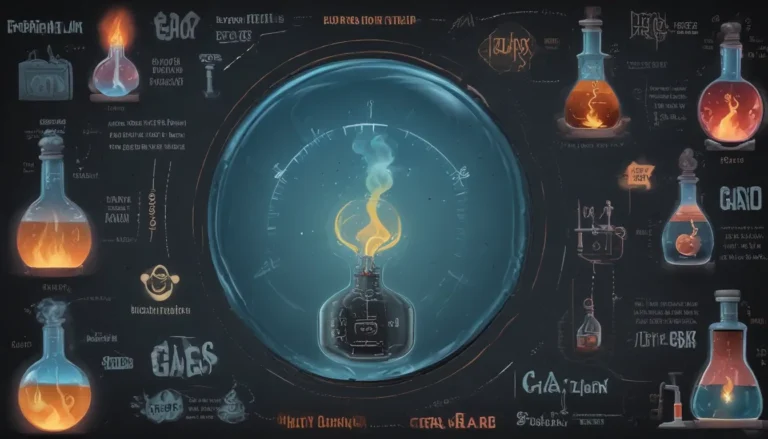A Note About Images: The images used in our articles are for illustration purposes only and may not exactly match the content. They are meant to engage readers, but the text should be relied upon for accurate information.
Transition metals, nestled in the heart of the periodic table, are a captivating group of elements that wield formidable influence across various spheres of science and industry. While names like iron, copper, and gold may ring a familiar bell, the realm of transition metals harbors a treasure trove of lesser-known wonders waiting to be discovered. Join us as we unravel 14 surprising facts about transition metals that will enrich your understanding and kindle a newfound appreciation for the marvels of chemistry.
Unveiling the Heart of the Periodic Table
Transition metals, the stalwarts of the periodic table, hold court from group 3 to group 12, forming a vital link between the alkali metals and their post-transition and inner transition metal counterparts. Their strategic position endows them with a diverse array of properties and functions that underpin their significance in the world of chemistry.
Enduring the Furnace of Temperatures
Transition metals display an impressive resilience to extreme temperatures, boasting high melting and boiling points that set them apart from their elemental brethren. This exceptional characteristic renders them indispensable in applications that demand unwavering fortitude under intense heat, such as in the realms of aerospace and automotive engineering.
Conductors of Electric Symphony
With delocalized electrons at their disposal, transition metals emerge as stalwart conductors of electricity, wielding their prowess in the realm of electrical wiring, circuitry, and electronic components. Their capacity to seamlessly ferry electrical currents underscores their indispensable role in powering the technological tapestry of modern civilization.
Chameleon-like Oxidation States
The transformative prowess of transition metals is exemplified by their ability to don multiple oxidation states, enabling them to traverse a rich spectrum of chemical behaviors and form intricate compounds. This inherent versatility imbues them with a malleability that lends itself to a myriad of chemical reactions and applications.
A Kaleidoscope of Colors
The enchanting allure of transition metal compounds manifests itself in a vibrant palette of colors, courtesy of their partially filled d-orbitals that infuse them with hues that captivate the eye. These resplendent shades find their canvas in pigments adorning paints, dyes, and even the celestial spectacle of fireworks.
From Micronutrient Maestros to Catalytic Virtuosos
Transition metals hold sway over the biological realm, with irreplaceable micronutrient roles that sustain vital bodily functions. Iron orchestrates the symphony of oxygen transport in our bloodstream, while copper harmonizes enzyme function to keep the biological orchestra humming in harmony. Additionally, their catalytic virtuosity endows them with an indispensable role in fueling industrial processes with unparalleled efficiency.
Magnetic Charms and Steel Strength
The magnetic allure of transition metals, embodied by stalwarts like iron, cobalt, and nickel, finds practical utility in the realm of magnets that power diverse applications from electronics to renewable energy systems. Furthermore, the foundational role they play in steel production underscores their pivotal contribution to enhancing the strength, durability, and resistance of this vital construction material.
Catalysts for Petrochemical Alchemy
Transition metals occupy a pivotal role in the alchemical transformation of petroleum, serving as catalysts that orchestrate the conversion of crude oil into a cornucopia of valuable products spanning gasoline, diesel, and a panoply of chemicals. This catalytic wizardry not only amplifies efficiency but also assuages the environmental footprint of the petrochemical industry.
Gemstone Alchemy and Artistic Sophistication
The vibrant hues adorning gemstones like emerald, ruby, and sapphire owe their mesmerizing charm to the presence of transition metal ions within their crystalline lattice. This enchanting fusion of transition metals and gemstones has enshrined them in the annals of artistic and jewelry-making history, linking the legacy of these elements to the timeless allure of aesthetic craftsmanship.
Healing Touch of Transition Metals
Transition metals wield a healing touch in the realm of medicine, with metal-based drugs emerging as potent tools in the treatment of diverse maladies, including cancer. Their targeted action and efficacy underscore their indispensable role in combating diseases with surgical precision, harnessing the alchemical essence of transition metals for the betterment of human health.
Illuminating Pathways of Medical Imaging
Isotopes of transition metals, such as technetium-99m, illuminate the path of medical imaging procedures with their gamma-ray emissions that unveil the inner workings of the heart, brain, bones, and other vital organs. This luminary role underscores their pivotal contribution to diagnostic medicine, shedding light on conditions that elude the naked eye.
Tranquilizing the Enigma of Vanadium
Diving deeper into the enigmatic realm of transition metals unveils the captivating allure of vanadium, a standout among its peers. With a bevy of fascinating facts that underscore its unique qualities and applications, vanadium stands as a testament to the enduring allure and utility of transition metals.
Gazing Through the Lens of Ligand Field Theory
Ligand field theory provides a captivating lens through which to behold the intricate dance of transition metals and their surrounding molecules. This framework elucidates the complex interactions that underpin the behavior and characteristics of these elements, offering profound insights into their elemental essence and enigmatic allure.
Journey of Discovery and Inquiry
Embarking on a journey of discovery amid the transition metals offers a glimpse into a realm teeming with marvels waiting to be unveiled. From their eclectic properties to their multifaceted applications, transition metals stand as paragons of versatility and utility that underpin the tapestry of modern science and industry. Join us in exploring the enigmatic world of transition metals and unraveling the mysteries that await within their elemental embrace.
Unraveling the Tapestry of Authenticity
Our commitment to delivering authentic and enriching content is the cornerstone of our endeavor to illuminate and educate. Each fact shared on our platform is a testament to the collective wisdom and insight of our users, ensuring the veracity and integrity of the knowledge we impart. Trust in our dedication to quality and authenticity as we traverse the realms of science, discovery, and learning together.
FAQs: Discovering the Essence of Transition Metals
Q: What distinguishes transition metals from other elements?
A: Transition metals exhibit unique properties such as multiple oxidation states, colorful compounds, and high melting points that set them apart from other elements.
Q: How many transition metals exist in total?
A: There are 38 transition metals in total, including familiar names like iron, copper, zinc, and gold.
Q: What applications do transition metals find in our daily lives?
A: Transition metals find applications in diverse fields such as steel production, electronics, catalysis, and medicine, reflecting their multifaceted utility.
Q: Are transition metals essential in biological systems?
A: Transition metals play indispensable roles in biological systems, supporting processes such as oxygen transport, enzyme function, and electron transfer.
Q: Are transition metals toxic to living organisms?
A: While some transition metals like mercury and lead can be toxic at high concentrations, many are essential micronutrients vital for life in trace amounts.
Q: Where are transition metals found besides Earth?
A: Transition metals are prevalent not only on Earth but also in celestial bodies like meteorites and stars, reflecting their cosmic ubiquity.
Transition metals beckon us into a realm of elemental enchantment where curiosity and inquiry converge in a symphony of discovery. As we unravel the mysteries and marvels that define these versatile elements, we embark on a journey that transcends mere chemistry to illuminate the transformative influence they wield across the tapestry of existence. Join us in celebrating the enigmatic allure of transition metals and basking in the radiance of their elemental essence.






